Abstract
The presence of opioid neuropeptides was shown to stimulate conformational changes and locomotory activity in immunocytes of two representatives of invertebrates as well as in human leukocytes. Cells were examined by use of phase-contrast and Nomarski optics coupled with a Zeiss Axiophot microscope, and of the Zeiss Videoplan/Vidas Image Analysis system. Immunocompetent blood cells, activated by exogenous opioids or stressful stimuli presumed to engage endogenous opioids, showed flattening, elongation, and formation of pseudopodia. In the mollusc Mytilus edulis, ameboid movements resulted in the formation of cell clusters, an activity not observed in untreated controls, or in immunocytes simultaneously exposed to opioid and naloxone. Tests with nine immunoreactive substances revealed immunocyte stimulation by delta, mu-, kappa-, and epsilon(?)-selective ligands. One of these, [D-Ala2,D-Met5]enkephalinamide (DAMA), active at a concentration of 10 pM, proved to be considerably more effective than the rest. The high pharmacological potency of DAMA, observed in both human and invertebrate immunocytes, sets this opioid apart from the closely related [D-Ala2,D-Leu5]enkephalin, a discrepancy not occurring in the mammalian nervous system. This suggests a specific function for [Met]enkephalin in immunoregulation, mediated perhaps by a special subtype of delta receptor.
Full text
PDF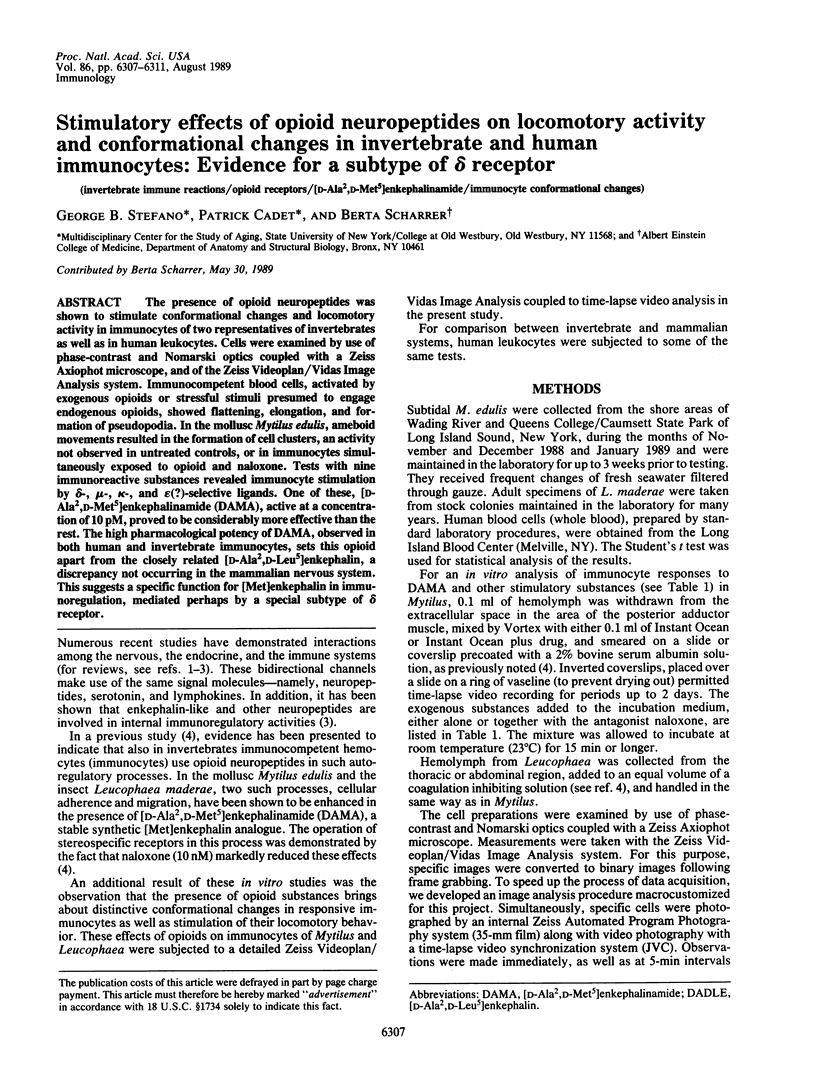
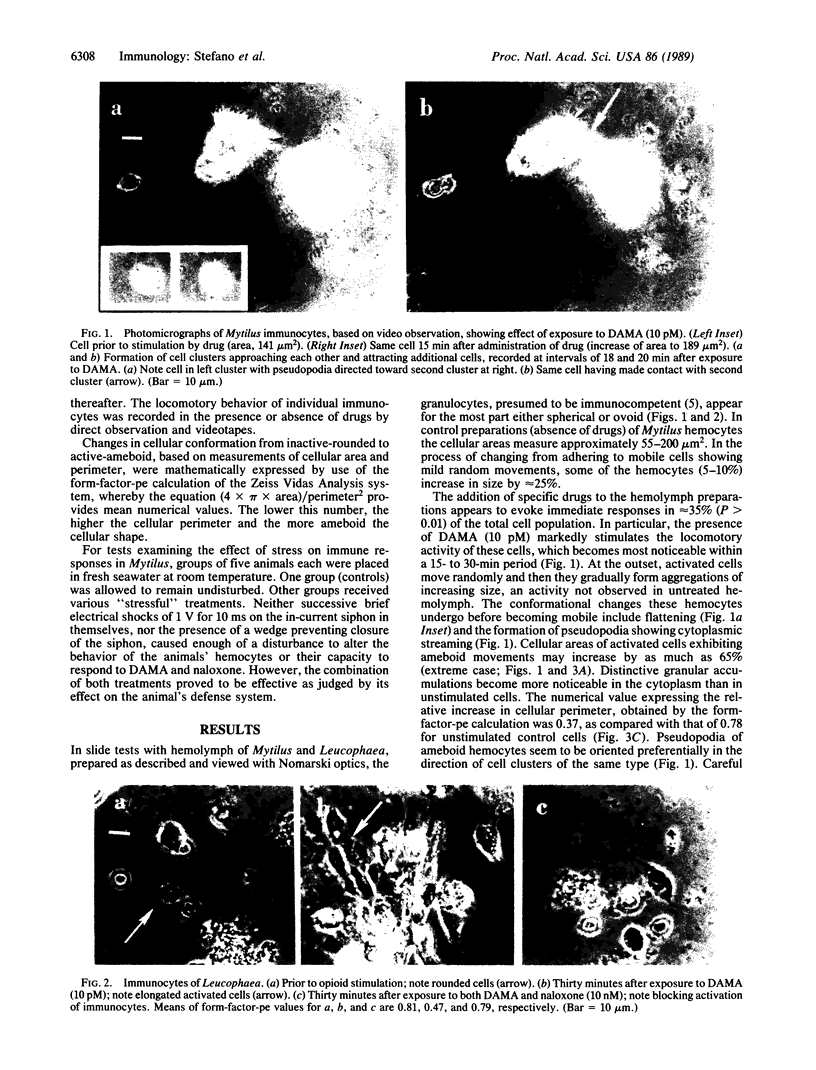
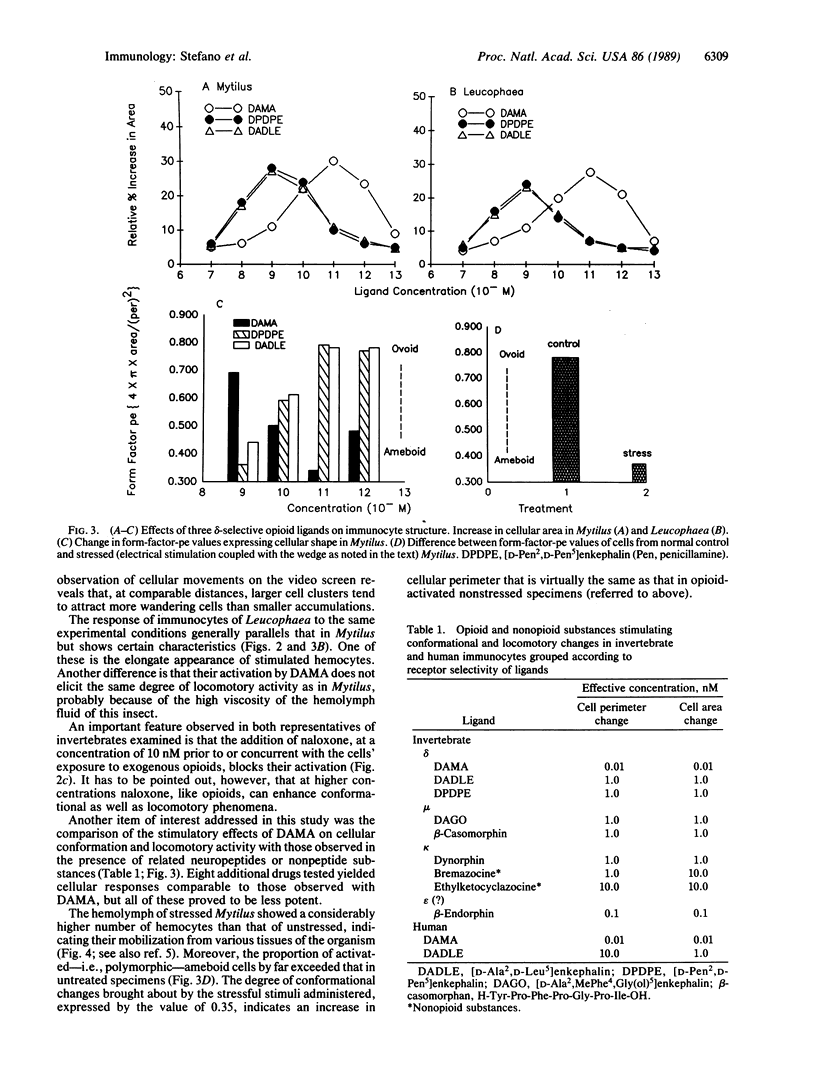
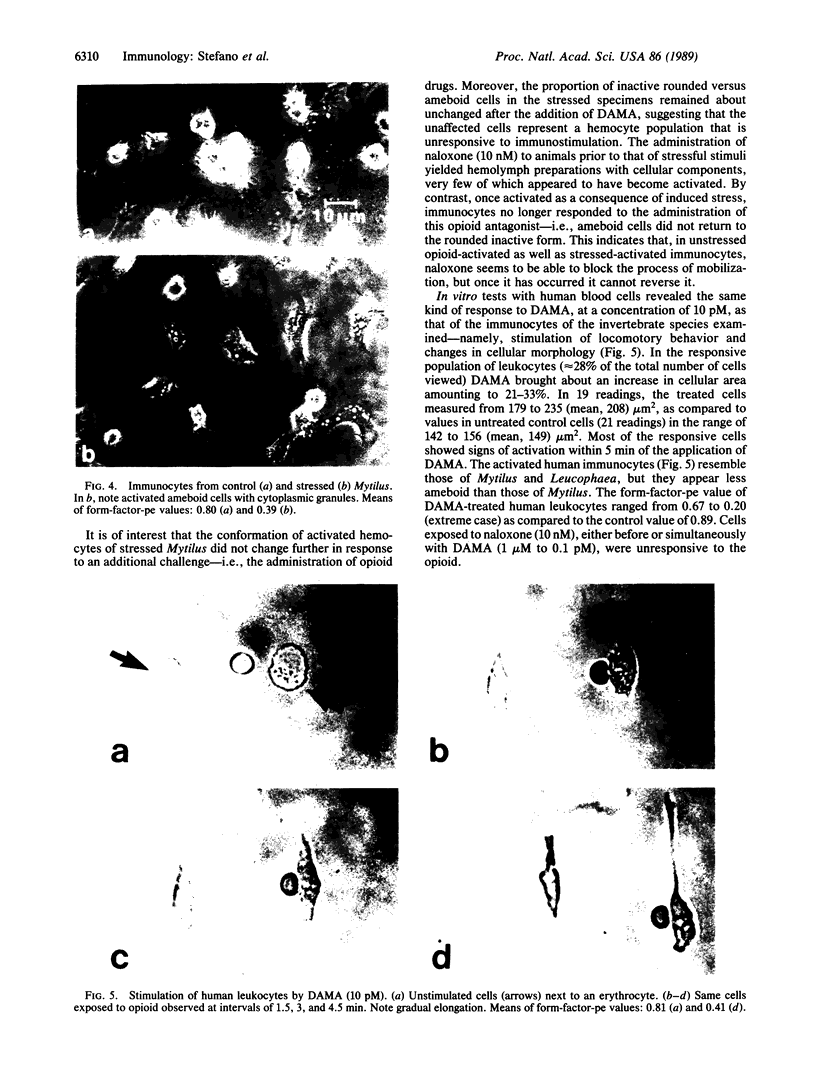
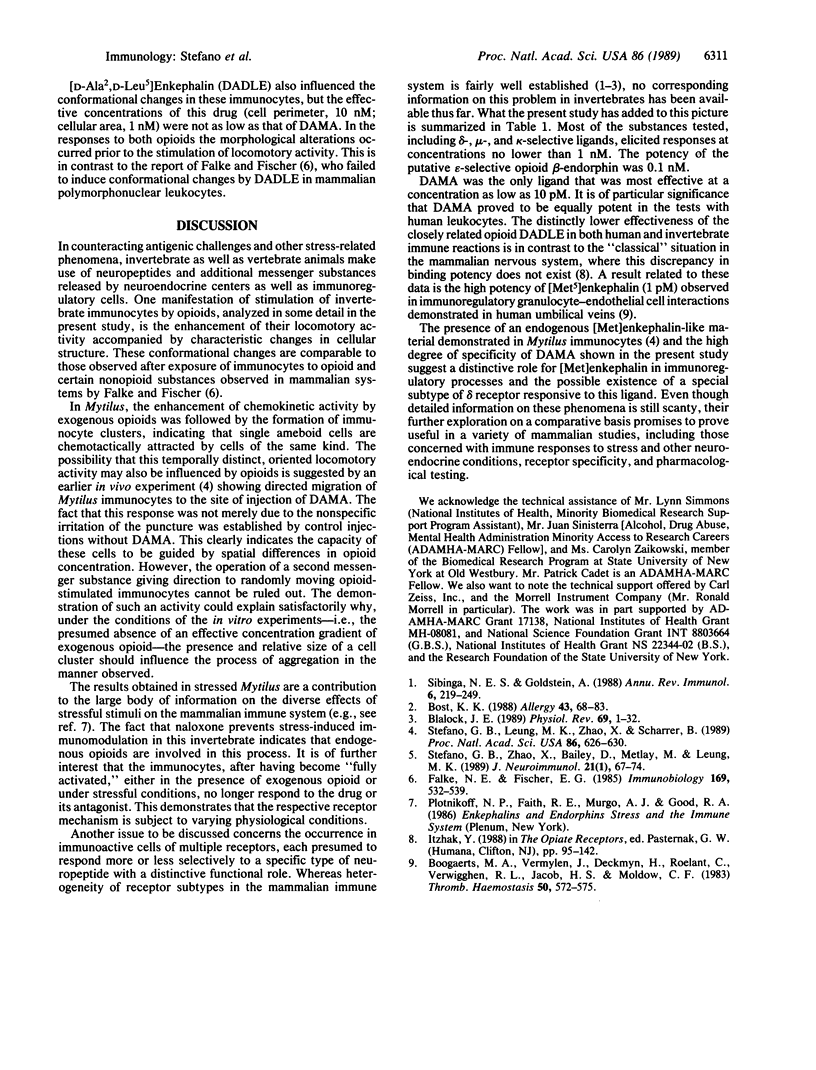
Images in this article
Selected References
These references are in PubMed. This may not be the complete list of references from this article.
- Blalock J. E. A molecular basis for bidirectional communication between the immune and neuroendocrine systems. Physiol Rev. 1989 Jan;69(1):1–32. doi: 10.1152/physrev.1989.69.1.1. [DOI] [PubMed] [Google Scholar]
- Boogaerts M. A., Vermylen J., Deckmyn H., Roelant C., Verwilghen R. L., Jacob H. S., Moldow C. F. Enkephalins modify granulocyte-endothelial interactions by stimulating prostacyclin production. Thromb Haemost. 1983 Aug 30;50(2):572–575. [PubMed] [Google Scholar]
- Bost K. L. Hormone and neuropeptide receptors on mononuclear leukocytes. Prog Allergy. 1988;43:68–83. [PubMed] [Google Scholar]
- Falke N. E., Fischer E. G. Cell shape of polymorphonuclear leukocytes is influenced by opioids. Immunobiology. 1985 Jul;169(5):532–539. doi: 10.1016/S0171-2985(85)80007-3. [DOI] [PubMed] [Google Scholar]
- Sibinga N. E., Goldstein A. Opioid peptides and opioid receptors in cells of the immune system. Annu Rev Immunol. 1988;6:219–249. doi: 10.1146/annurev.iy.06.040188.001251. [DOI] [PubMed] [Google Scholar]
- Stefano G. B., Leung M. K., Zhao X. H., Scharrer B. Evidence for the involvement of opioid neuropeptides in the adherence and migration of immunocompetent invertebrate hemocytes. Proc Natl Acad Sci U S A. 1989 Jan;86(2):626–630. doi: 10.1073/pnas.86.2.626. [DOI] [PMC free article] [PubMed] [Google Scholar]
- Stefano G. B., Zhao X. H., Bailey D., Metlay M., Leung M. K. High affinity dopamine binding to mouse thymocytes and Mytilus edulis (Bivalvia) hemocytes. J Neuroimmunol. 1989 Jan;21(1):67–74. doi: 10.1016/0165-5728(89)90160-4. [DOI] [PubMed] [Google Scholar]










